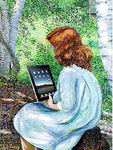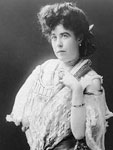Michael Yell on a Strategy for the Use of Textbooks in the History Classroom
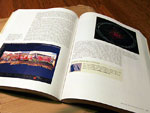
[The readers] fundamental purpose is to understand the text, to grasp what is being said from the point of view of the person writing.
—Richard Paul
In recent blogs I have written about teaching strategies for involving students in inquiry and using primary sources, strategies that I have found engage students and help them “enter into” the content. And while we should be engaging our history students in inquiry by using primary sources, we also have textbooks that we are to use in our classes. Can we use the textbook in thoughtful active ways, ways that help the reader understand the text, or is “read these pages and do the chapter questions” part and parcel of history instruction?
This blog will examine a teaching strategy, and some variations, that I have found make reading text material a more engaging, interactive, and thoughtful learning experience for my students. The strategy is known as GIST.
Generating Interactions between Schemata and Texts is a rather imposing name, but my 7th graders have no difficulty grasping this acronym. I learned this strategy this past summer in a workshop put on by two of my district’s ELL staff, but soon found that it benefitted all of my students. I often use this strategy when using the textbook, and have also adapted it for DVD clips and use with primary sources.
When using GIST your students read a passage in a text, and then discuss the section. During the review they find and note a small number (four or five depending upon the size of the reading) of key concepts or terms that they consider most important to understanding that reading. Finally, using their own words, students write a summary of the reading which uses those key terms. Those terms are underlined or highlighted in their summary.
When first using the strategy, it is important to model it. My students are in groups and so I give each group a paragraph about a topic we are studying. They read through it together, and, when the reading is complete, underline/highlight what they feel are the key terms.
I have the same paragraph written on my Smartboard. We talk it through in class, and use the highlighting function to make note of their key terms (volunteers come up and do the highlighting). Finally we write a summary in class that includes the highlighted terms.
As an example, take these paragraphs from Joy Hakim’s A History of Us: War, Terrible War, 1855-1865. In this section, Ms. Hakim writes about President Lincoln’s address at Gettysburg. She begins with a few words about the main speaker of the occasion, Edward Everett:
He talks for almost two hours, without notes, in a voice deep and rich. Later no one seems to remember what he said, but they knew he said it well. There are prayers and other speeches, and the 15,000 listeners who sit or stand in the afternoon sun are hot and tired when the president finally rises, puts on his steel-rimmed glasses, and reads his few remarks. His is a country voice, and it sounds dull after the polished tones of an orator.
The speech was a failure; so Lincoln tells his friends, and so he believes. But he is wrong. The presidency has changed Lincoln. He has grown in greatness. He had learned to use words as a poet uses them—with great care and precision. He has been an able country lawyer with a good mind and a taste for jokes. Now he is much more than that. The deaths and the burdens of war are making him noble, and thoughtful, and understanding, and sad.
After students have read the passage, individually, in pairs, or small groups, I ask them to go back and choose the key terms and ideas that they feel are most important to understanding the passage. In this passage, for example, they might choose speech, failure, Lincoln, grown, noble.
Their final task is to rewrite the two paragraphs in a few sentences, using their own words, and including many, or perhaps all, of the key terms that they have listed. The key terms must be underlined or highlighted in their paragraph.
For instance, a student might write:
At Gettysburg President Lincoln spoke after Edward Everett, a famous speaker of the time. President Lincoln spoke briefly, and felt his speech was a failure. But he had grown from a small town lawyer to a noble president, and his speech reflected that growth.
Although I only learned the GIST strategy this summer, it has become one of my go-to strategies for reading. Because work in my class is interactive, be it in pairs or small groups, students do at least part of the GIST reading assignment with others.
The basic ideas behind this strategy can be used with primary source readings by having students read the quotation, write the key words, and than summarize in their own words. Finally, it also works well with DVD clips. Set up the section for students to view, and then have them think about the section, decide on key terms, and write their summary.
The next blog will deal with my go-to strategy for using DVD or video clips in the classroom.
Give GIST a try, adapt the strategy, and make it your own.
Our Research Brief "Learning From History and Social Studies Textbooks" suggests other ways to strengthen textbook readings, while Teaching with Textbooks rounds up more entries on engaging with texts.
In Beyond the Textbook, historians take common points in textbooks' narratives, such as the Civil Rights Movement or the causes of the Civil War, and model opening them up with primary sources.
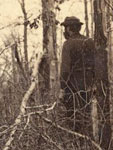
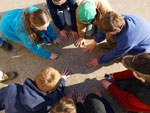
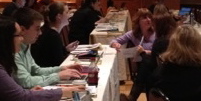
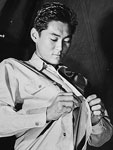
 The lives and experiences of all groups in the U.S. overlap and intertwine with each other, and no group's history exists in isolation. Japanese American history didn't begin and end with World War II, nor did it exist in a vacuum. Enter the keywords "registration certificate 1942" into the search box at the
The lives and experiences of all groups in the U.S. overlap and intertwine with each other, and no group's history exists in isolation. Japanese American history didn't begin and end with World War II, nor did it exist in a vacuum. Enter the keywords "registration certificate 1942" into the search box at the  Both a Pacific Island and a U.S. state, Hawaii has a unique position for Asian Pacific American Month. Many different cultures come together here, including Native Hawaiian, Filipino, Japanese, Korean, and Chinese, among others, and it is one of only four states where non-Hispanic whites do not form the majority. Sources on the history of many of these groups can be found in the
Both a Pacific Island and a U.S. state, Hawaii has a unique position for Asian Pacific American Month. Many different cultures come together here, including Native Hawaiian, Filipino, Japanese, Korean, and Chinese, among others, and it is one of only four states where non-Hispanic whites do not form the majority. Sources on the history of many of these groups can be found in the 